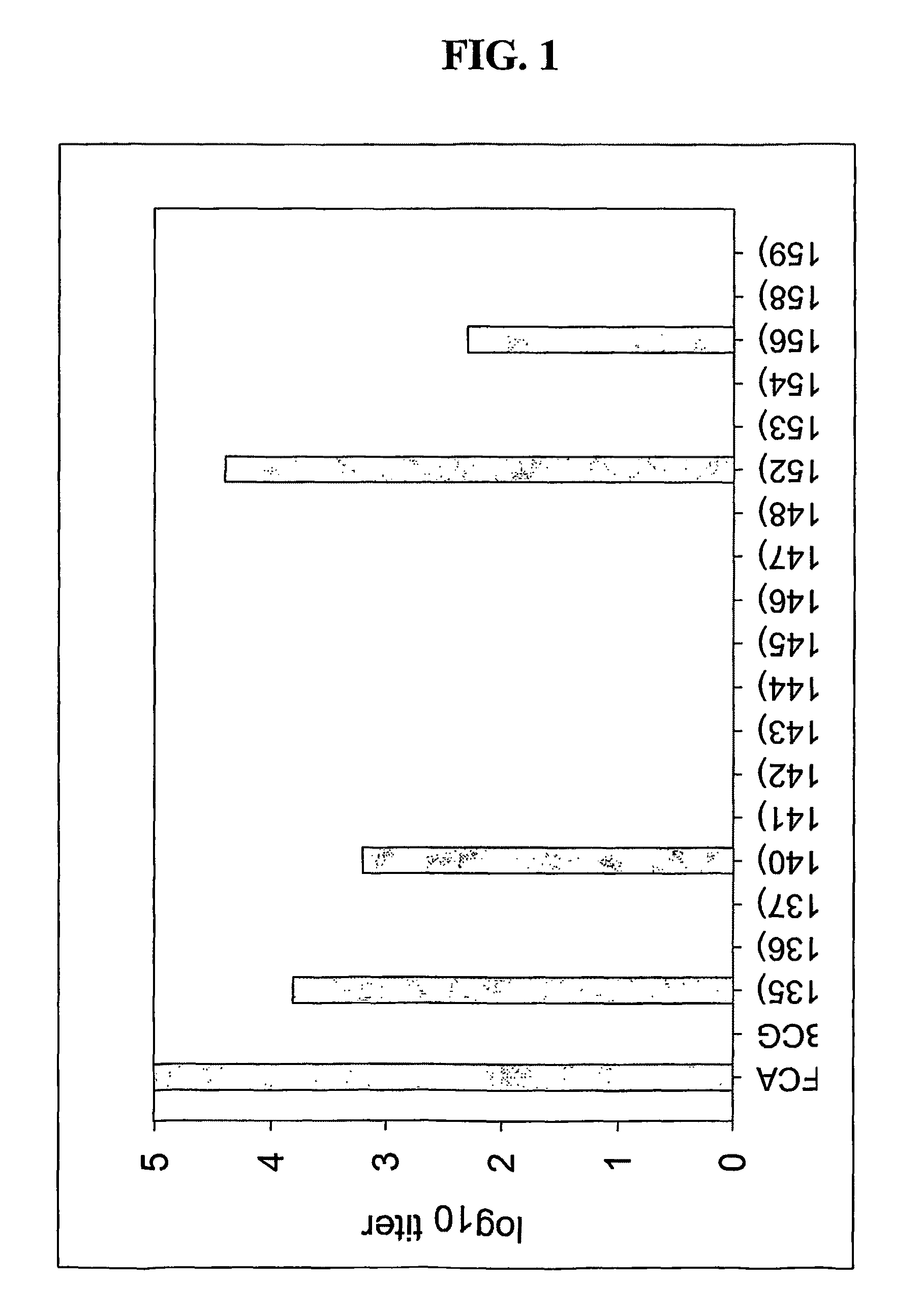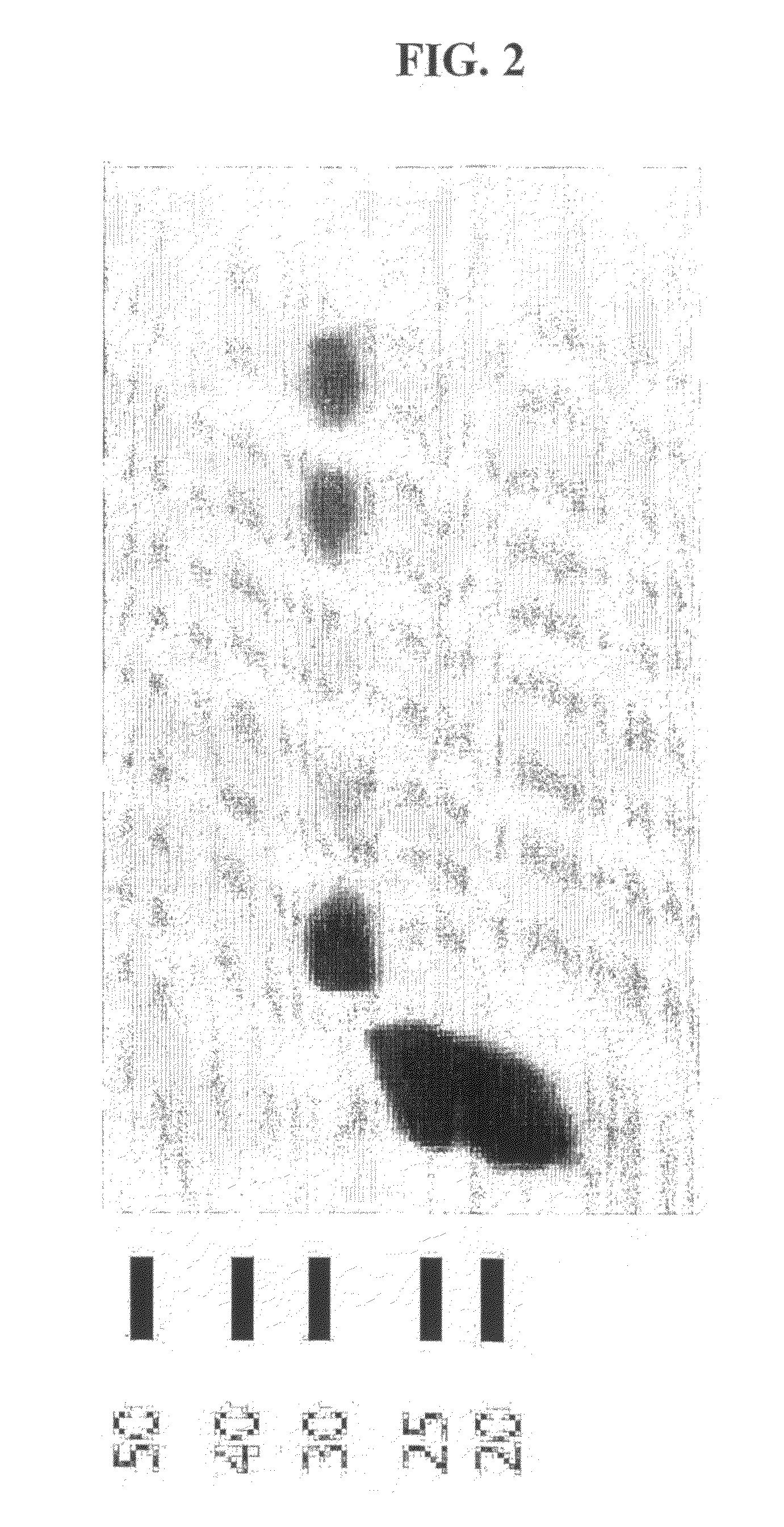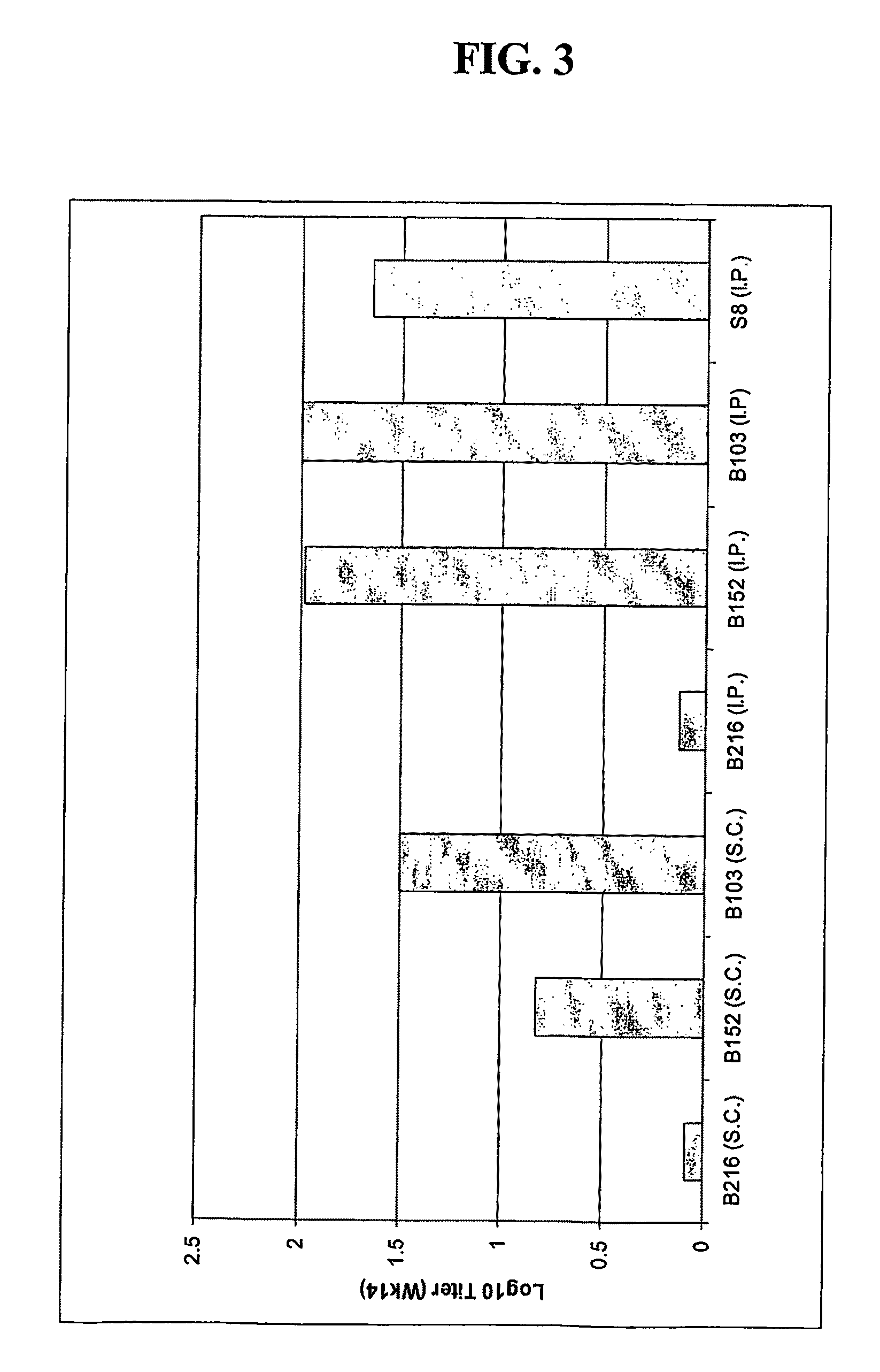Mycobacteria expressing HIV-1 and malaria antigens
a technology of mycobacteria and antigens, applied in the field of mycobacteria expressing hiv-1 and malaria antigens, can solve the problems of eliciting very short-lived immunity, limiting their ultimate effectiveness, and distinct stages of functional impairmen
- Summary
- Abstract
- Description
- Claims
- Application Information
AI Technical Summary
Benefits of technology
Problems solved by technology
Method used
Image
Examples
example 1
Optimizing Mycobacterium bovis BCG Malaria Vaccines
[0119]Recombinant Mycobacterium bovis BCG constructs were created to optimize malarial antigen expression that elicits priming or protective immune responses to malarial antigens. BCG has the potential to deliver foreign antigens to children at birth in a developing world setting. Moreover, based on its persistence and immunogenicity, it has the potential to elicit long-lasting immune responses.
Results
[0120]In order to test the hypothesis that rBCG strains expressing a higher level of recombinant malaria surface antigen PfMSP1-19 will be more immunogenic in mice, the PfMSP1-19 gene sequence was cloned into a mycobacterium expression vector under the control of various mycobacterial promoters including hsp60, mtrA, 18 kD, α-Ag, and aceA. PfMSP1-19 was also expressed and directed to different locations within and associated with the rBCG bacilli including intracellular, secretory, and surface locales. The codons of the PfMSP1-19 gene ...
example 2
Generation of CD8+ T Cell Responses by a Recombinant Nonpathogenic Mycobacterium smegmatis Vaccine Vector Expressing HIV-1 Env
example summary
[0126]Because the vaccine vectors currently being evaluated in human populations all have significant limitations in their immunogenicity, novel vaccine strategies are needed for the elicitation of cell-mediated immunity. The nonpathogenic, rapidly growing mycobacterium M. smegmatis was engineered as a vector expressing full length HIV-1 HXBc2 envelope protein. Immunization of mice with recombinant M. smegmatis led to the expansion of MHC class I-restricted HIV-1 epitope-specific CD8+ T cells that were cytolytic and secreted IFN-γ. Effector and memory T lymphocytes (CTL) were elicited, and repeated immunization generated a stable central memory pool of virus-specific cells. Importantly, pre-existing immunity to BCG had only a marginal effect on the immunogenicity of recombinant M. smegmatis. This mycobacterium may therefore be a useful vaccine vector.
Materials and Methods
[0127]Generation of recombinant mycobacteria. Mycobacterium smegmatis MC2155 was grown in Middlebrook 7H9 (Difco)...
PUM
| Property | Measurement | Unit |
|---|---|---|
| molecular mass | aaaaa | aaaaa |
| concentration | aaaaa | aaaaa |
| concentration | aaaaa | aaaaa |
Abstract
Description
Claims
Application Information
 Login to View More
Login to View More - R&D
- Intellectual Property
- Life Sciences
- Materials
- Tech Scout
- Unparalleled Data Quality
- Higher Quality Content
- 60% Fewer Hallucinations
Browse by: Latest US Patents, China's latest patents, Technical Efficacy Thesaurus, Application Domain, Technology Topic, Popular Technical Reports.
© 2025 PatSnap. All rights reserved.Legal|Privacy policy|Modern Slavery Act Transparency Statement|Sitemap|About US| Contact US: help@patsnap.com



